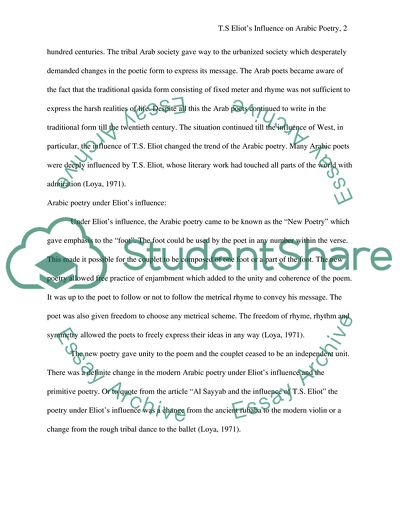Cite this document
(T.S Eliots Influence on Arabic Poetry Coursework, n.d.)
T.S Eliots Influence on Arabic Poetry Coursework. Retrieved from https://studentshare.org/literature/1540399-explain-the-influence-of-t-s-eliot-on-20th-century-arabic-poetry-giving-examples
T.S Eliots Influence on Arabic Poetry Coursework. Retrieved from https://studentshare.org/literature/1540399-explain-the-influence-of-t-s-eliot-on-20th-century-arabic-poetry-giving-examples
(T.S Eliots Influence on Arabic Poetry Coursework)
T.S Eliots Influence on Arabic Poetry Coursework. https://studentshare.org/literature/1540399-explain-the-influence-of-t-s-eliot-on-20th-century-arabic-poetry-giving-examples.
T.S Eliots Influence on Arabic Poetry Coursework. https://studentshare.org/literature/1540399-explain-the-influence-of-t-s-eliot-on-20th-century-arabic-poetry-giving-examples.
“T.S Eliots Influence on Arabic Poetry Coursework”, n.d. https://studentshare.org/literature/1540399-explain-the-influence-of-t-s-eliot-on-20th-century-arabic-poetry-giving-examples.


